Semi-Analytical Solution for the Vertical Vibration of a Single Pile Embedded in a Frozen Poroelastic Half-Space
Abstract
:1. Introduction
2. Mathematical Model
3. Analytical Solutions for the Vertical Vibration of the Pile
4. Verification
4.1. Comparison and Verification of an End-Bearing Pile in a Single-Layer Frozen Soil
4.2. Verification of the Solution for a Saturated Half–Space
5. Parametric Study
5.1. Influence of the Bearing Coefficient of the Pile Bottom
5.2. Influence of the Temperature
5.3. Influence of the Shear Modulus of the Pile-Surrounding Soil
6. Conclusions
- (1)
- The smaller the support stiffness of the pile bottom, the greater the amplitudes of dynamic stiffness and damping. When the support stiffness of the pile bottom is large enough, the results calculated by the present solutions are consistent with those for an end-bearing pile.
- (2)
- The lower the temperature, the smaller amplitudes of dynamic stiffness and damping. The amplitude of the first reflected wave signal also decreases with the decrease in the temperature.
- (3)
- The increase in the shear modulus of the pile-surrounding soil results in the decrease of dynamic stiffness and damping amplitudes. The amplitude of the first reflected wave signal also decreases with the increase of the shear modulus of the pile-surrounding soil.
Author Contributions
Funding
Institutional Review Board Statement
Informed Consent Statement
Data Availability Statement
Conflicts of Interest
Appendix A
References
- El Naggar, M.H.; Novak, M. Nonlinear lateral interaction in pile dynamics. Soil Dyn. Earthq. Eng. 1995, 14, 141–157. [Google Scholar] [CrossRef]
- Liao, S.T.; Roesset, J.M. Dynamic response of intact piles to impulse loads. Int. J. Numer. Anal. Met. 1997, 21, 255–275. [Google Scholar] [CrossRef]
- Wu, W.B.; Wang, K.H.; Zhang, Z.Q.; Leo, C.J. Soil-pile interaction in the pile vertical vibration considering true three-dimensional wave effect of soil. Int. J. Numer. Anal. Meth. 2013, 37, 2860–2876. [Google Scholar] [CrossRef]
- Cui, C.Y.; Meng, K.; Xu, C.S.; Liang, Z.M.; Li, H.J.; Pei, H.H. Analytical solution for longitudinal vibration of a floating pile in saturated porous media based on a fictitious saturated soil pile model. Comput. Geotech. 2021, 128, 103840. [Google Scholar] [CrossRef]
- Zheng, C.J.; Kouretzis, G.; Ding, X.M.; Luan, L.B. Vertical vibration of end-bearing single piles in poroelastic soil considering three-dimensional soil and pile wave effects. Comput. Geotech. 2022, 146, 104740. [Google Scholar] [CrossRef]
- Wu, W.B.; Yang, Z.J.; Liu, X.; Zhang, Y.P.; Liu, H.; El Naggar, M.H.; Xu, M.J.; Mei, G.X. Horizontal dynamic response of pile in unsaturated soil considering its construction disturbance effect. Ocean Eng. 2022, 245, 110483. [Google Scholar] [CrossRef]
- Nogami, T.; Konagai, K. Time domain axial response of dynamically loaded single piles. J. Eng. Mech. Div. ASCE 1986, 112, 1241–1252. [Google Scholar] [CrossRef]
- Michaelides, O.; Gazetas, G.; Bouckovalas, G.; Chrysikou, E. Approximate non-linear dynamic axial response of piles. Geotechnique 1998, 48, 33–53. [Google Scholar] [CrossRef] [Green Version]
- Militano, G.; Rajapakse, R.K.N.D. Dynamic response of a pile in a multi-layered soil to transient torsional and axial loading. Geotechnique 1999, 49, 91–109. [Google Scholar] [CrossRef]
- Wang, K.H.; Wu, W.B.; Zhang, Z.Q.; Leo, C.J. Vertical dynamic response of an inhomogeneous viscoelastic pile. Comput. Geotech. 2010, 37, 536–544. [Google Scholar] [CrossRef]
- Dai, D.H.; El Naggar, M.H.; Zhang, N.; Gao, Y.F.; Li, Z.Y. Vertical vibration of a pile embedded in radially disturbed viscoelastic soil considering the three-dimensional nature of soil. Comput. Geotech. 2019, 111, 172–180. [Google Scholar] [CrossRef]
- Cui, C.Y.; Meng, K.; Xu, C.S.; Wang, B.L.; Xin, Y. Vertical vibration of a floating pile considering the incomplete bonding effect of the pile-soil interface. Comput. Geotech. 2022, 150, 104894. [Google Scholar] [CrossRef]
- Wu, W.B.; Liu, H.; Yang, X.Y.; Jiang, G.S.; El Naggar, M.H.; Mei, G.S.; Liang, R.Z. New method to calculate apparent phase velocity of open-ended pipe pile. Can. Geotech. J. 2020, 57, 127–138. [Google Scholar] [CrossRef]
- Wang, K.H.; Zhang, Z.Q.; Leo, C.J.; Xie, K.H. Dynamic torsional response of an end bearing pile in saturated poroelastic medium. Comput. Geotech. 2008, 35, 450–458. [Google Scholar] [CrossRef]
- Zeng, X.; Rajapakse, R.K.N.D. Dynamic axial load transfer from elastic bar to poroelastic medium. J. Eng. Mech. 1999, 125, 1048–1055. [Google Scholar] [CrossRef]
- Chen, L.B.; Wu, W.B.; Liu, H.; Li, J.X.; Tim, N.; El Naggar, M.H. Analytical solution for kinematic response of offshore piles under vertically propagating S-waves. Ocean Eng. 2022, 262, 112018. [Google Scholar] [CrossRef]
- Luan, L.B.; Ding, X.M.; Zheng, C.J.; Kouretzis, G.; Wu, Q. Dynamic response of pile groups subjected to horizontal loads. Can. Geotech. J. 2020, 57, 469–481. [Google Scholar] [CrossRef]
- Zheng, C.J.; Cai, Y.J.; Kouretzis, G.; Luan, L.B. Horizontal vibration of rigid strip footings on poroelastic half-space. J. Sound Vib. 2022, 522, 116731. [Google Scholar] [CrossRef]
- Zhou, X.L.; Wang, J.H.; Jiang, L.F.; Xu, B. Transient dynamic response of pile to vertical load in saturated soil. Mech. Res. Commun. 2009, 36, 618–624. [Google Scholar] [CrossRef]
- Shi, L.; Xu, C.J.; Cai, Y.Q.; Geng, X.Y. Dynamic impedances and free-field vibration analysis of pile groups in saturated ground. J. Sound Vib. 2014, 333, 3709–3731. [Google Scholar] [CrossRef]
- Xiao, S.; Wang, K.; Gao, L.; Wu, J. Dynamic characteristics of a large-diameter pile in saturated soil and its application. Int. J. Numer. Anal. Met. 2018, 42, 1255–1269. [Google Scholar] [CrossRef]
- Li, Q.; Shi, Q.; Wang, K.H. A computational model of pile vertical vibration in saturated soil based on the radial disturbed zone of pile driving. IOP Conf. Ser. Mater. Sci. Eng. 2010, 10, 012069. [Google Scholar] [CrossRef]
- Huang, Y.M.; Wang, P.G.; Zhao, M.; Zhang, C.; Du, X.L. Dynamic responses of an end-bearing pile subjected to horizontal earthquakes considering water-pile-soil interactions. Ocean Eng. 2021, 238, 109726. [Google Scholar] [CrossRef]
- Bryden, C.; Arjomandi, K.; Valsangkar, A. Dynamic axial stiffness and damping parameters of tapered piles. Int. J. Geomech. 2018, 18, 06018014. [Google Scholar] [CrossRef]
- Bryden, C.; Arjomandi, K.; Valsangkar, A. Dynamic axial response of tapered piles including material damping. Pract. Period. Struct. 2020, 25, 04020001. [Google Scholar] [CrossRef]
- Zhang, Y.P.; Jiang, G.S.; Wu, W.B.; El Naggar, M.H.; Liu, H.; Wen, M.J.; Wang, K.H. Analytical solution for distributed torsional low strain integrity test for pipe pile. Int. J. Numer. Anal. Met. 2022, 46, 47–67. [Google Scholar] [CrossRef]
- Zhang, S.P.; Cui, C.Y.; Yang, G. Vertical dynamic impedance of pile groups partially embedded in multilayered, transversely isotropic, saturated soils. Soil Dyn. Earthq. Eng. 2019, 117, 106–115. [Google Scholar] [CrossRef]
- Senjuntichai, T.; Sornpakdee, N.; Teerawong, J.; Rajapakse, R.K.N.D. Time-dependent response of an axially loaded elastic bar in a multilayered poroelastic medium. J. Eng. Mech. 2007, 133, 578–587. [Google Scholar] [CrossRef]
- Wang, N.; Le, Y.; Tong, L.H.; Fang, T.; Zhu, B.T.; Hu, W.T. Vertical dynamic response of an end-bearing pile considering the nonlocal effect of saturated soil. Comput. Geotech. 2020, 121, 103461. [Google Scholar] [CrossRef]
- Li, Q.; Shu, W.L.; Cao, L.; Duan, W.W.; Zhou, B. Vertical vibration of a single pile embedded in a frozen saturated soil layer. Soil Dyn. Earthq. Eng. 2019, 122, 185–195. [Google Scholar] [CrossRef]
- Li, Q.; Shu, W.L.; Duan, W.W.; Cao, L. Vertical vibration of a pile in a double-layered stratum under the freezing and thawing processes of saturated porous media. Cold Reg. Sci. Technol. 2020, 169, 102891. [Google Scholar] [CrossRef]
- Cao, L.; Zhou, B.; Li, Q.; Duan, W.W.; Shu, W.L. Vertically dynamic response of an end-bearing pile embedded in a frozen saturated porous medium under impact loading. Shock Vib. 2019, 2019, 8983128. [Google Scholar] [CrossRef]
- Zheng, C.; Kouretzis, G.P.; Sloan, S.W.; Liu, H.L.; Ding, X.M. Vertical vibration of an elastic pile embedded in poroelastic soil. Soil Dyn. Earthq. Eng. 2015, 77, 177–181. [Google Scholar] [CrossRef]
- Lu, S.H.; Wang, K.H.; Wu, W.B.; Leo, C.J. Longitudinal vibration of pile in layered soil based on Rayleigh-Love rod theory and fictitious soil-pile model. J Cent. South Univ. 2015, 22, 1909–1918. [Google Scholar] [CrossRef]
- Wu, J.T.; Wang, K.H.; El Naggar, M.H. Dynamic soil reactions around pile-fictitious soil pile coupled model and its application in parallel seismic method. Comput. Geotech. 2019, 110, 44–56. [Google Scholar] [CrossRef]
- Carcione, J.M.; Santos, J.E.; Ravazzoli, C.L.; Helle, H.B. Wave simulation in partially frozen porous media with fractal freezing conditions. J. Appl. Phys. 2003, 94, 7839–7847. [Google Scholar] [CrossRef] [Green Version]
- Carcione, J.M.; Seriani, G.Z. Wave Simulation in frozen porous media. J. Comput Phys. 2001, 170, 676–695. [Google Scholar] [CrossRef] [Green Version]
- Santos, J.E.; Ravazzoli, C.L.; Carcione, J.M. A model for wave propagation in a composite solid matrix saturated by a single-phase fluid. J. Acoust. Soc. Am. 2004, 115, 2749–2760. [Google Scholar] [CrossRef]
- Leclaire, P.H. Extension of Biot’s theory of wave propagation to frozen porous media. J. Acoust. Soc. Am. 1994, 96, 3753–3768. [Google Scholar] [CrossRef] [Green Version]
- Zhang, Y.P.; Wang, Z.Q.; El Naggar, M.H.; Wu, W.B.; Wang, L.X.; Jiang, G.S. Three-dimensional wave propagation in a solid pile during torsional low strain integrity test. Int. J. Numer. Anal. Met. 2022, 46, 2398–2411. [Google Scholar] [CrossRef]
- Zhang, Y.P.; El Naggar, M.H.; Wu, W.B.; Wang, Z.Q.; Yang, X.Y.; Jiang, G.S. Dynamic torsional impedance of large-diameter pipe pile for offshore engineering: 3D analytical solution. Appl. Math. Model. 2022, 111, 664–680. [Google Scholar] [CrossRef]
- Li, L.C.; Liu, X.; Liu, H.; Wu, W.B.; Lehane, B.M.; Jiang, G.S.; Xu, M.J. Experimental and numerical study on the static lateral performance of monopile and hybrid pile foundation. Ocean Eng. 2022, 255, 111461. [Google Scholar] [CrossRef]


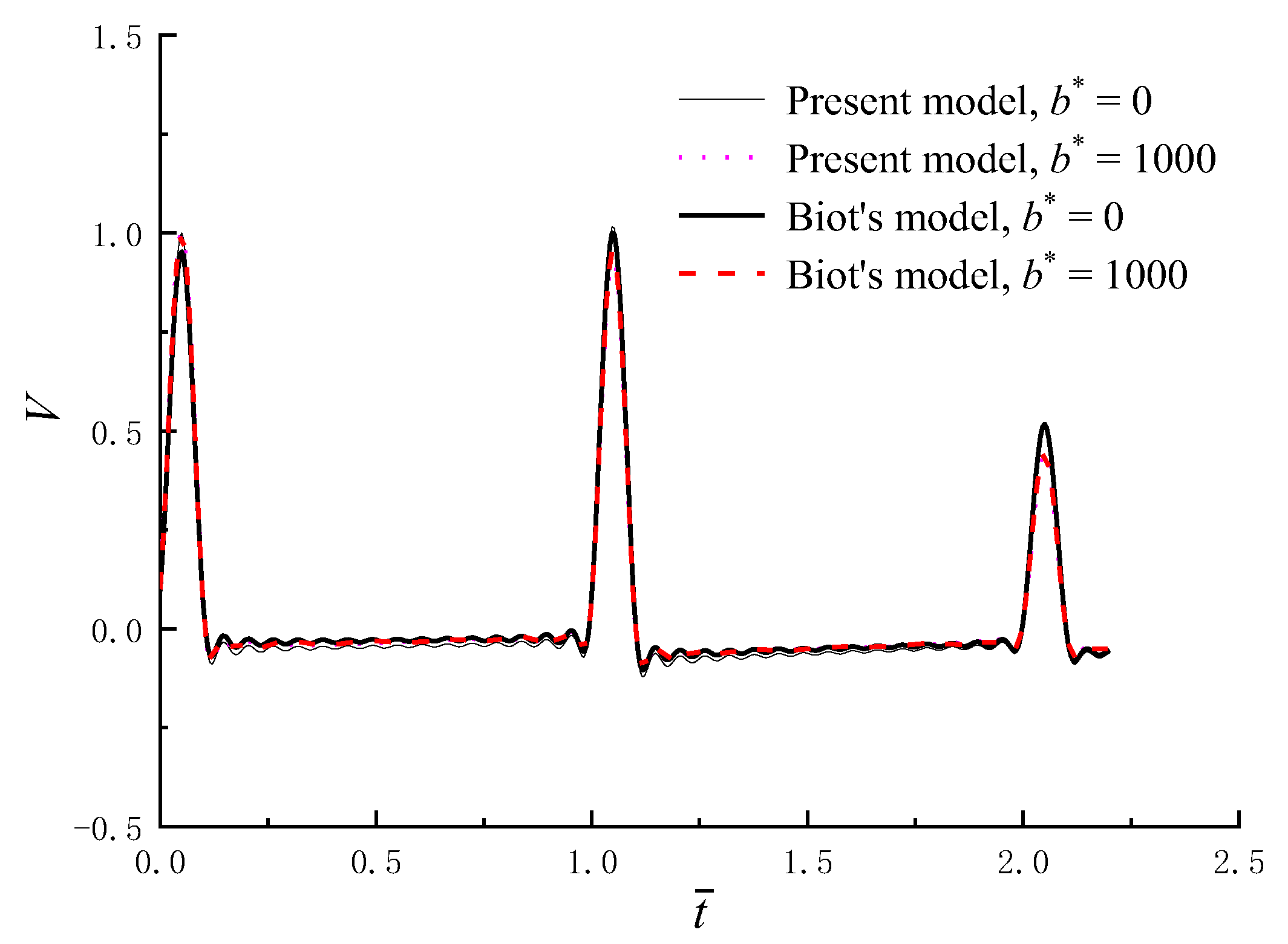
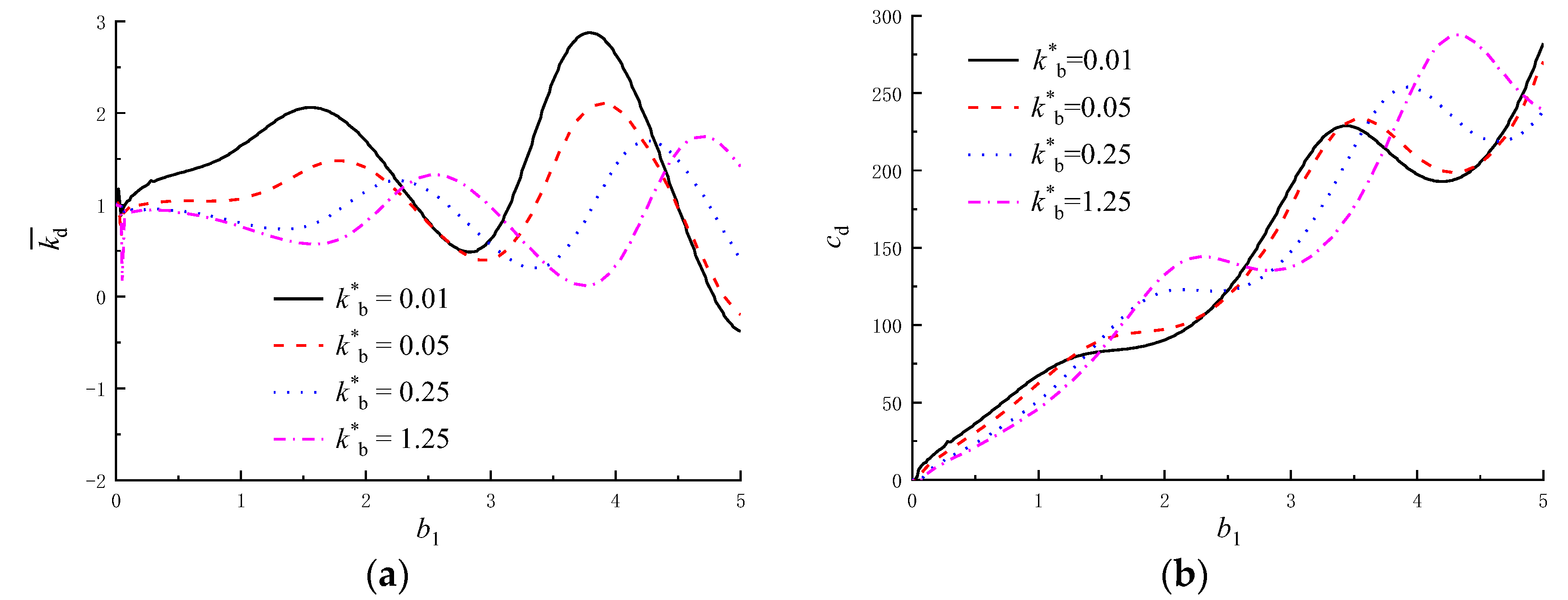
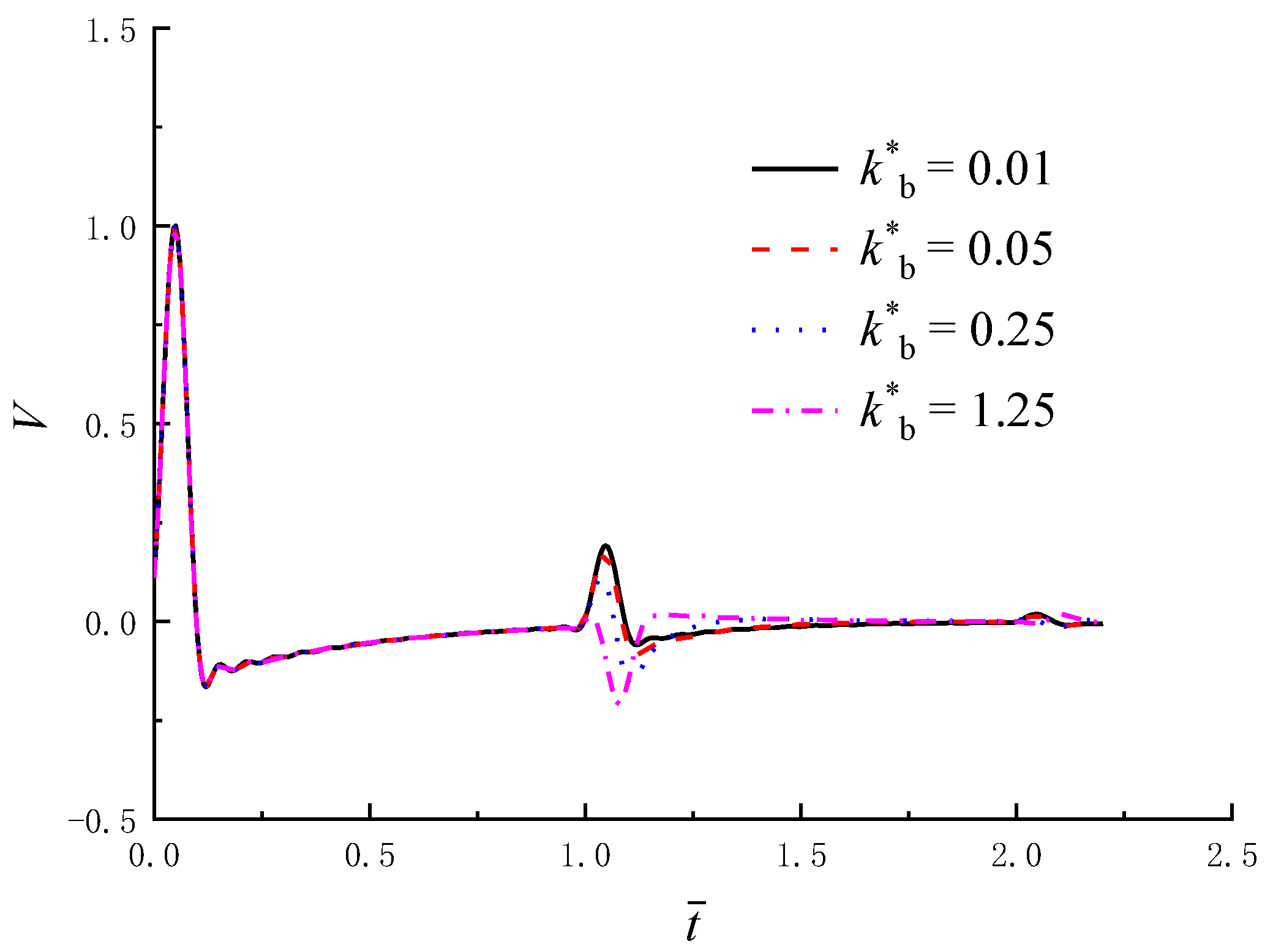
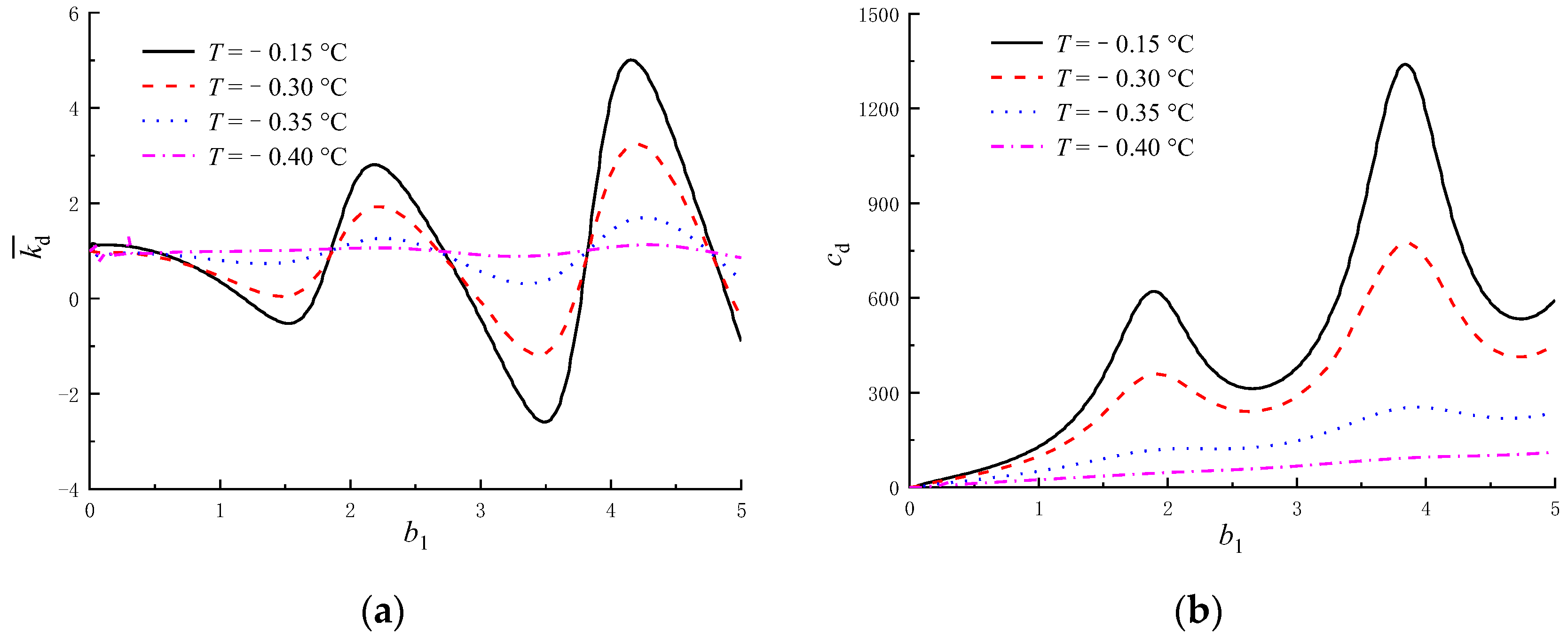


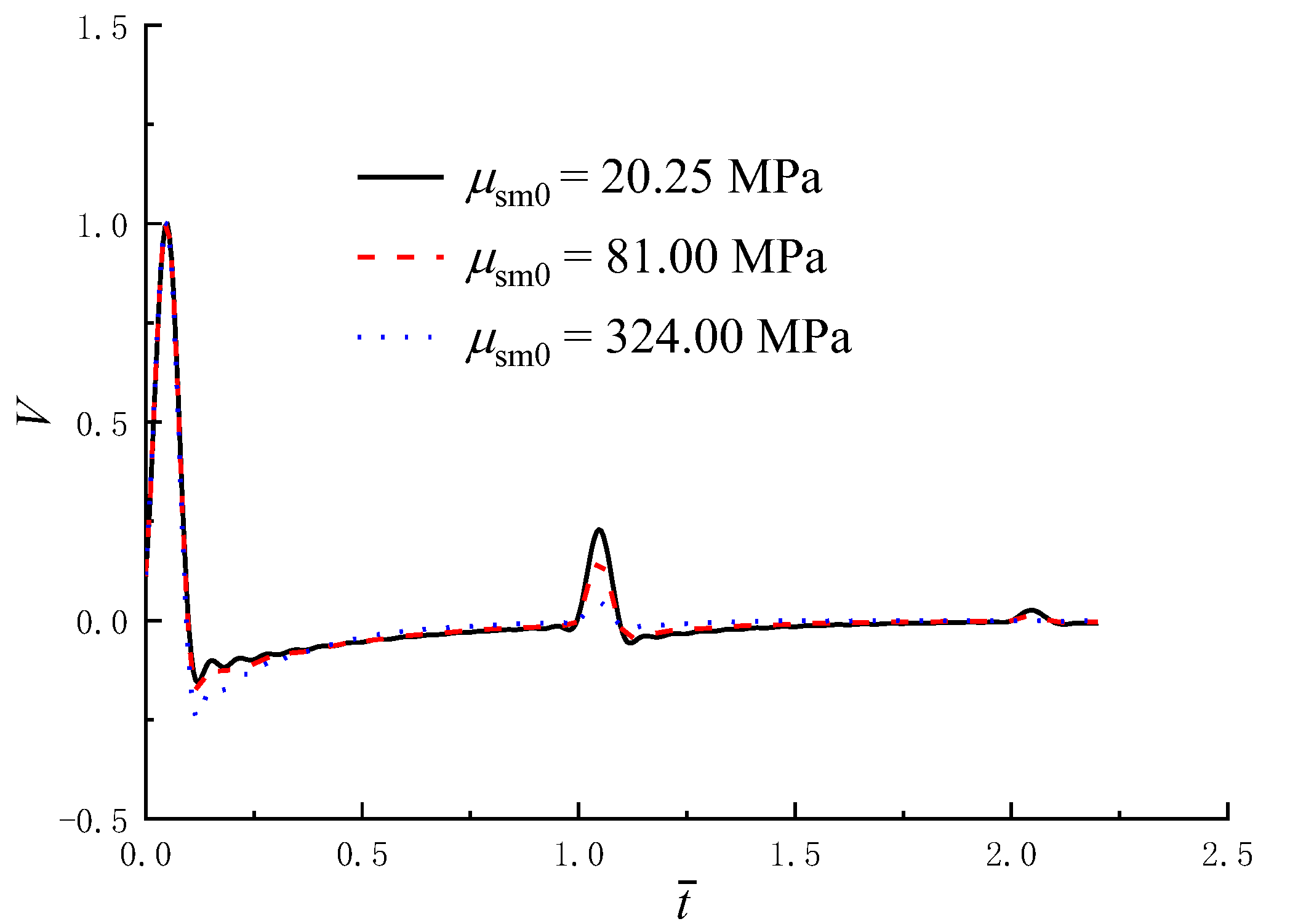
Disclaimer/Publisher’s Note: The statements, opinions and data contained in all publications are solely those of the individual author(s) and contributor(s) and not of MDPI and/or the editor(s). MDPI and/or the editor(s) disclaim responsibility for any injury to people or property resulting from any ideas, methods, instructions or products referred to in the content. |
© 2022 by the authors. Licensee MDPI, Basel, Switzerland. This article is an open access article distributed under the terms and conditions of the Creative Commons Attribution (CC BY) license (https://creativecommons.org/licenses/by/4.0/).
Share and Cite
Chen, C.; Wang, Z.; Wu, W.; Wen, M.; Yao, W. Semi-Analytical Solution for the Vertical Vibration of a Single Pile Embedded in a Frozen Poroelastic Half-Space. Appl. Sci. 2023, 13, 1508. https://doi.org/10.3390/app13031508
Chen C, Wang Z, Wu W, Wen M, Yao W. Semi-Analytical Solution for the Vertical Vibration of a Single Pile Embedded in a Frozen Poroelastic Half-Space. Applied Sciences. 2023; 13(3):1508. https://doi.org/10.3390/app13031508
Chicago/Turabian StyleChen, Chen, Zongqing Wang, Wenbing Wu, Minjie Wen, and Wenjuan Yao. 2023. "Semi-Analytical Solution for the Vertical Vibration of a Single Pile Embedded in a Frozen Poroelastic Half-Space" Applied Sciences 13, no. 3: 1508. https://doi.org/10.3390/app13031508



